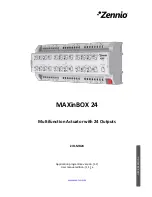
Rev. 1.40
�1�
De�e��e� 1�� �01�
Rev. 1.40
�17
De�e��e� 1�� �01�
BS67F340/BS67F350/BS67F360/BS67F370
Enhanced Touch A/D Flash MCU with LCD Driver
BS67F340/BS67F350/BS67F360/BS67F370
Enhanced Touch A/D Flash MCU with LCD Driver
LCD Driver Output
The number of COM and SEG outputs supplied by the LCD driver, as well as its biasing and wave
type selections, are dependent upon how the LCD control bits are programmed. The Bias Type,
whether C or R type is also selected by a software control bit.
The nature of Liquid Crystal Displays require that only AC voltages can be applied to their pixels
as the application of DC voltages to LCD pixels may cause permanent damage. For this reason the
relative contrast of an LCD display is controlled by the actual RMS voltage applied to each pixel,
which is equal to the RMS value of the voltage on the COM pin minus the voltage applied to the
SEG pin. This differential RMS voltage must be greater than the LCD saturation voltage for the
pixel to be on and less than the threshold voltage for the pixel to be off.
The requirement to limit the DC voltage to zero and to control as many pixels as possible with
a minimum number of connections requires that both a time and amplitude signal is generated
and applied to the application LCD. These time and amplitude varying signals are automatically
generated by the LCD driver circuits in the microcontroller. What is known as the duty determines
the number of common lines used, which are also known as backplanes or COMs. The duty, which
is to have a value of 1/4 and which equates to a COM number of 4, therefore defines the number
of time divisions within each LCD signal frame. Two types of signal generation are also provided,
known as Type A and Type B, the required type is selected via the TYPE bit in the LCDC0 register.
Type B offers lower frequency signals, however, lower frequencies may introduce flickering and
influence display clarity.
















































